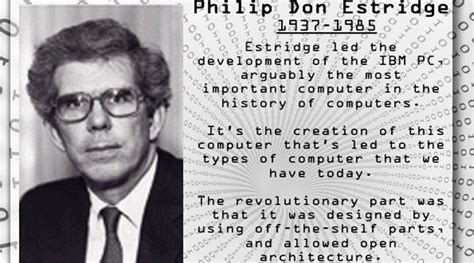In the annals of technological innovation, few names stand as tall as Don Estridge, the pioneering engineer often heralded as the ‘father of the IBM PC’. His story is not merely one of brilliant ideas but is also a poignant tale of tragedy, corporate culture, and the shaping of the modern computer industry. Many remember the fateful day of Delta Air Lines Flight 191 when Estridge’s life was unexpectedly cut short. Despite personal opinions on the IBM PC, the collective sigh at his untimely demise spoke volumes about the respect he had garnered in the tech community.
Estridge led a team often described as ‘misfits’ within the gigantic corporate ecosystem of IBM. His ability to transcend the strict boundaries and norms of corporate culture facilitated the creation of something as transformative as the IBM PC. This notion is beautifully exemplified when we imagine small, radical teams achieving greatness while corporate inertia stifles larger traditional companies. Estridge’s division was a relatively small upstart within IBM, but it operated with a level of autonomy and freedom that enabled them to create something revolutionary. The method by which Estridge and his team succeeded brings to light a pressing question in today’s corporate world: can rigid corporate structures evolve to nurture and reward innovative work?
The tragedy of Estridge is not only in his sudden passing but in contemplating what further contributions he could have made to the tech industry. Such feelings are particularly strong when reflecting on personal anecdotes from those who lived through that era or the parts of the story that bring readers to tears. These personal stories, often touched with a mix of sadness and inspiration, suggest that there is much to learn from thinking about how a company values its isolated ‘misfit’ departments and allows them the room to innovate freely.
It is not uncommon for successful tech projects to be viewed through the lens of survivor bias. Estridge and his team’s story elicits curiosity about other similar projects which, unfortunately, failed to gain traction due to stifling corporate environments. Thus, the question looms large: how many potential Estridges exist within the corporate labyrinth, only to be hampered by an unwillingness to break free from established norms? Companies should take heed of this and continually assess whether their internal structures are conducive to fostering innovation rather than merely maintaining the status quo.
For those interested in better understanding the culture that shaped this era, the TV series ‘Halt and Catch Fire’ offers a fictional but insightful look into the battles and personalities that defined the early PC industry, albeit from a more startup-oriented view. The show captures the essence of technological fervor and the roller-coaster journey of bringing new ideas to life. This fictional portrayal raises interesting dialogues on how character development and period-setting contribute to understanding the broader story of technology innovation.
Several commenters recall their own experiences and underline how even well-entrenched companies like IBM missed the boat on emerging markets by misjudging them as fads—a sentiment parallel to how Intel underestimated the mobile market. The business lesson here is profound. Established players are often myopic, focusing on their existing strongholds while hastily dismissing burgeoning opportunities. Estridge’s success with the IBM PC underscores the importance of visionary leadership willing to take calculated risks—a valuable takeaway for today’s tech entrepreneurs and corporate leaders.
The tale of Don Estridge’s IBM PC is also a story about how the commodification of technology products can have far-reaching economic impacts. IBM’s decision to open the architecture of the IBM PC catalyzed an ecosystem of third-party products, including software and peripherals, creating a thriving market that propelled the entire industry forward. This open approach can be contrasted with more closed systems like the Apple II, showing how strategy in technological design and intellectual property can shape market dynamics profoundly.
In conclusion, Don Estridge’s legacy serves as a considerable landmark in the history of personal computing. His journey reflects not just the triumphs of technological innovation but the complexities of navigating corporate culture. His story sparks reflection on how companies today might better balance the stringent demands of corporate bureaucracy with the creative freedom necessary for genuine innovation. Remembering Estridge is not just about honoring the past; it’s about gleaning lessons that can inspire the future of tech development.


Leave a Reply